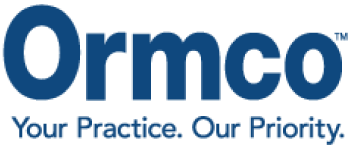Ποιοι Διαφανείς Νάρθηκες είναι οι καλύτεροι;

Σήμερα κυκλοφορούν στην παγκόσμια αγορά διάφοροι τύποι διαφανών ορθοδοντικών ναρθήκων. Η πρώτη εταιρεία που καθιερώθηκε στον τομέα αυτό ήταν η “Invisalign”, η οποία παραμένει ο κορυφαίος πάροχος αυτού του είδους ορθοδοντικών συσκευών παγκοσμίως. Η επιτυχία της Invisalign υπήρξε τόσο μεγάλη ώστε το όνομά της έγινε συνώνυμο με τους διαφανείς νάρθηκες, ωστόσο, δεν πρόκειται για ξεχωριστή μέθοδο θεραπείας, αλλά για εμπορική ονομασία.
Είμαστε ανοιχτά Τρι-Τετ-Παρ, 16.00-21.00.
Διοχάρους 13, περιοχή Χίλτον.
Επικοινωνήστε μαζί μας στο
+30 210 7253133,
f+30 210 7253143
ή μέσω email στο
info[at]DrKonstantinosKontos.gr




Τα τελευταία χρόνια, πολλές ακόμη εταιρείες έχουν εισέλθει με επιτυχία στον χώρο των διαφανών ναρθήκων. Οι περισσότεροι μεγάλοι κατασκευαστές ορθοδοντικών συσκευών διαθέτουν πλέον εξειδικευμένα τμήματα που επικεντρώνονται αποκλειστικά στους διαφανείς νάρθηκες. Σημαντικές εταιρίες περιλαμβάνουν τις ClearCorrect (Straumann), Spark Aligners (Ormco), Clarity Aligners (3M), SureSmile και Angel Aligner, μεταξύ άλλων. Επιπλέον, ορισμένοι ορθοδοντικοί παράγουν “in-house” νάρθηκες με χρήση τεχνολογίας 3D εκτύπωσης. Οι λύσεις αυτές είναι συνήθως πιο οικονομικές, αλλά συνοδεύονται από περιορισμένη κλινική τεκμηρίωση και έρευνα. Η συνεχιζόμενη πρόοδος στις ψηφιακές τεχνολογίες, στην τρισδιάστατη απεικόνιση και εκτύπωση, καθώς και στην ανάπτυξη καινοτόμων υλικών, ενισχύει τον ανταγωνισμό στον τομέα – μια εξέλιξη που ωφελεί τόσο τους ορθοδοντικούς όσο και, κυρίως, τους ασθενείς.
Όλες οι παραπάνω εταιρείες – μαζί με αρκετούς μικρότερους παρόχους – προσφέρουν αξιόπιστες λύσεις που επιτρέπουν στους ορθοδοντικούς να εφαρμόζουν αποτελεσματικές θεραπείες και να χαρίζουν όμορφα χαμόγελα. Καθώς η ευθύνη για το σχεδιασμό και την υλοποίηση της θεραπείας ανήκει αποκλειστικά στον ορθοδοντικό, εκείνος είναι που θα επιλέξει τον πάροχο που ανταποκρίνεται καλύτερα στις κλινικές του ανάγκες.
Για να είναι αποτελεσματική η ορθοδοντική θεραπεία με διαφανείς νάρθηκες – ώστε τα στραβά δόντια να μετακινηθούν και να ευθυγραμμιστούν σωστά εντός του προκαθορισμένου χρονικού πλαισίου – οι νάρθηκες πρέπει να φοριούνται 20 έως 22 ώρες την ημέρα. Το μεγαλύτερο πλεονέκτημα της μεθόδου είναι ότι οι νάρθηκες είναι αισθητά λιγότερο ορατοί σε σύγκριση με τα παραδοσιακά σιδεράκια (μεταλλικά brackets), αν και δεν είναι εντελώς αόρατοι, όπως τα γλωσσικά σιδεράκια. Αυτό οφείλεται κυρίως στο ότι απαιτείται η συγκόλληση μικρών, οδοντόχρωμων προσαρτημάτων στα δόντια, τα οποία αυξάνουν την ακρίβεια και την αποτελεσματικότητα των μετακινήσεων.
Ένα δεύτερο σημαντικό πλεονέκτημα της μεθόδου είναι ότι, επειδή οι νάρθηκες είναι αφαιρούμενοι, διευκολύνουν το βούρτσισμα και επιτρέπουν καλύτερη στοματική υγιεινή. Η διάρκεια της θεραπείας με νάρθηκες μπορεί να είναι είτε μικρότερη είτε μεγαλύτερη σε σχέση με τα παραδοσιακά σιδεράκια, ανάλογα με την περίπτωση και το θεραπευτικό πλάνο.
Η εμπειρία του ορθοδοντικού και η κατάλληλη επιλογή περιστατικών για θεραπεία με διαφανείς νάρθηκες αποτελούν καθοριστικούς παράγοντες για τη διάρκεια της θεραπείας. Το συνολικό κόστος είναι συνήθως υψηλότερο σε σχέση με τα μεταλλικά σιδεράκια, ενώ το τελικό αποτέλεσμα εξαρτάται – και πάλι – από την εξειδίκευση του ορθοδοντικού, τη σωστή διάγνωση, την ορθή επιλογή περιστατικού και φυσικά, από τη συνεργασία του ασθενούς.
Οι διαφανείς νάρθηκες αποτελούν μια πολλά υποσχόμενη θεραπευτική μέθοδο, ιδίως λόγω των σημαντικών δυνατοτήτων περαιτέρω εξέλιξης, χάρη στη συνεχή τεχνολογική καινοτομία.